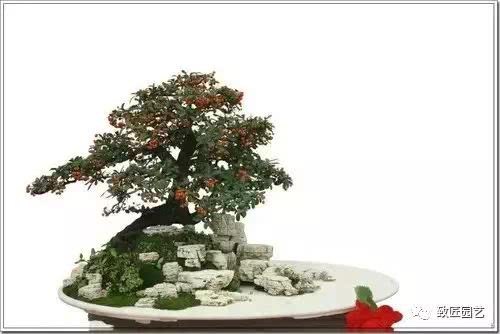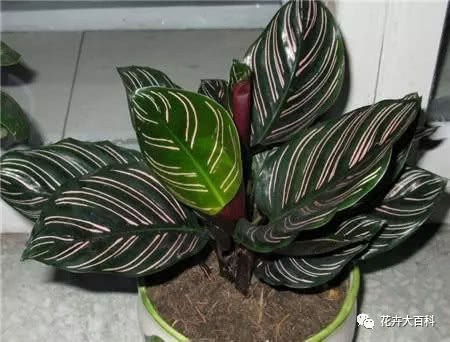What is the fastidiousness of pile Jingzhi?

The branch is like a human limb. It forms the skeleton of the plant together with the trunk. The layout of branches determines the layout of "leaves". Therefore, the layout of branches is very important. In the composition of the pile scene, the branches are mainly composed of side branches, back branches and shaded branches. Different branches play different artistic roles.
1. Side branches refer to the branches on the left and right sides of the trunk, which form a "tree skeleton" together with the trunk. The lateral branches remain the same, and the shape of the tree will not change fundamentally. Therefore, lateral branches play an important role. From the perspective of artistic expression, the lateral branches show a kind of external and exposed line beauty.
2. The back branch refers to the branch behind the trunk, also known as the back hidden branch. It plays the role of "hiding", which is opposite to the role of lateral branches. It shows an inherent, saving beauty.
3. The branches that can cover the trunk and make the trunk "appear from time to time" on the ornamental surface of the tree are called sheltered branches. The shading branch mainly covers a certain part of the trunk, so that the trunk is hidden and hidden, receiving the artistic effect of being hidden from time to time. The stem-covered branch can be dried directly by the front branch or retracted by the lateral branch.
Lateral branches, posterior branches and shaded branches are an organic whole. They interact with each other and complement each other to form a beautiful tree.
The branches of the pile scene should be arranged in a three-dimensional manner on the whole trunk. You can't just want to look good on one side, but on many sides, so as to form a beautiful three-dimensional landscape. At the same time, the unity of the physiological requirements of trees and the art of pile scenery should be considered. Therefore, there should be certain rules in the layout of branches.
1. Side branches occupy a favorable position in the layout of pile branches, side branches often fall in a favorable position and abduction to form a tree shape, while rear branches and shading branches are often in a disadvantageous position, which play a role of embellishment and repair. From the point of view of the front of the tree, the landing of the lateral branches generally protrudes at the curved top of the trunk, which is not only vigorous and powerful, but also in line with the appearance of the natural tree; the rear branches and shading branches are seated on the way of bending, and the layout is ingenious and interspersed with nature. in order to play the role of "hiding" and "hiding". This is because the lateral branch is a "tree skeleton", in addition to the root and trunk, it is the main ornamental branch completely exposed. Therefore, the lateral branches should occupy a favorable position on the trunk to expose its outstretched lines and zigzag branches for viewing. The later branches and shade branches gather inward, and their landing on the trunk cannot be seen from the front, and what people watch is the exposed branches and leaves, and their "hidden" and "hidden" artistic expressions.
2. To avoid overlapping placement, the layout should be scattered forward and backward, with clear layers. It is necessary to avoid the overlap among lateral branches, posterior branches and shaded branches as far as possible, so as to reflect the artistic expression of "hiding in dew". "hiding" is a means of artistic expression, and "hiding without revealing" is not to mention artistic expression and appreciation.
3. The crescent-shaped radiation layout overlooks the whole tree body, and the location of lateral branches, posterior branches and shading branches is radially distributed with the trunk as the center. If you add the shape of the "blade", it will eventually form a crescent-shaped layout, in which the concave surface is the front and the convex surface is the back. This is because the crescent-shaped layout plays an important role in improving the viewing effect of the pile scene. The crescent-shaped concave face is facing forward, and people's line of sight is on the center of the arc, which is conducive to the concentration of the line of sight and the immersive feeling, which makes the whole shape attractive. If the branches and leaves are arranged in a growing strip, the line of sight cannot be cohesive, the scenery is scattered, and the ornamental effect is not good. If the convex face of the crescent is facing forward, the scene is far away, and the viewer has a feeling of being excluded from the scenery. Therefore, according to the visual law, no matter the branch and leaf layout of single or multiple trees, it is necessary to form a crescent-shaped layout.
4. The length of the branch should be determined after the location of the natural branch on the stem, and the length of the branch and the size of the "leaf" formed should also be considered, which has a beautiful effect on the tree. Generally speaking, the lateral branch is the longest, the posterior branch is the second, and the anterior branch is the shortest. In terms of top and bottom, the bottom branch is the longest and shortens from the bottom to the top. The size of the "leaf" formed by the branch should be commensurate with the length of the branch in order to reflect the natural demeanor.
5. When the big branches are evacuated and the dense twigs are located as a whole, we should also make sure that the big branches are evacuated and the branchlets are dense. In other words, in the pile tree shape, it is generally the mother branch that is exposed, while the other branches are covered by "leaves". Therefore, "evacuation of large branches" mainly refers to the mother branches, and "dense twigs" refers to other branches. Therefore, in the layout, do not use the two mother branches from the trunk to form a "leaf" to prevent the "tree skeleton" from being disorganized. A mother branch must be used to form a "leaf" or several "leaves" in order to ensure the moderate evacuation and density of the "tree skeleton", mottled through the air, and beautiful lines.
Wonderful content
- Prev

The fragrance in the valley where the wind is hard to hide is fragrant even if there is no one-orchid
Wonderful content click below to see more content, please click: bonsai article summary! Do you like this article? Share immediately.
- Next

Deceived by the green appearance of cat's eye taro leaves for a long time, it will also blossom.
Although cat's eye bamboo taro is a tropical foliage plant with bright green leaves, it also blossoms with beautiful shape and fragrance. Next, let's take a look at how to raise the cat's eye taro to blossom. Cat's eye bamboo taro will be.
Related
- Wuhan Hospital Iron Tree Blooming Result Was Instantly Frightened by the Gardener Master
- Which variety of camellia is the most fragrant and best? Which one do you like best?
- What is the small blue coat, the breeding methods and matters needing attention of the succulent plant
- Dormancy time and maintenance management of succulent plants during dormancy
- Minas succulent how to raise, Minas succulent plant pictures
- What are the varieties of winter succulent plants
- How to raise succulent plants in twelve rolls? let's take a look at some experience of breeding twelve rolls.
- Attention should be paid to water control for succulent plants during dormant period (winter and summer)
- Watering experience of twelve rolls of succulent plants
- Techniques for fertilizing succulent plants. An article will let you know how to fertilize succulent plants.

